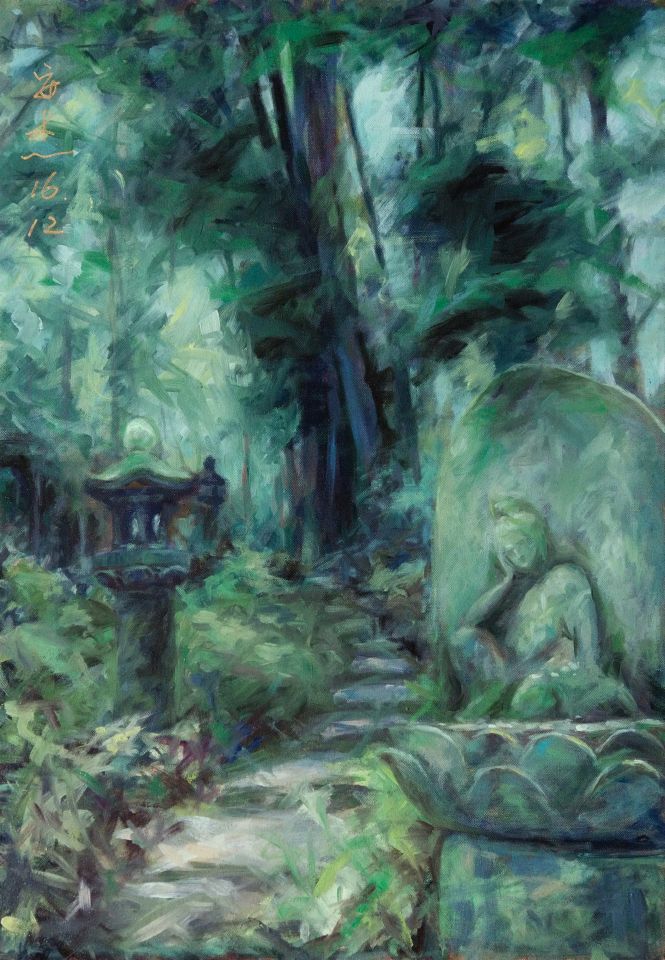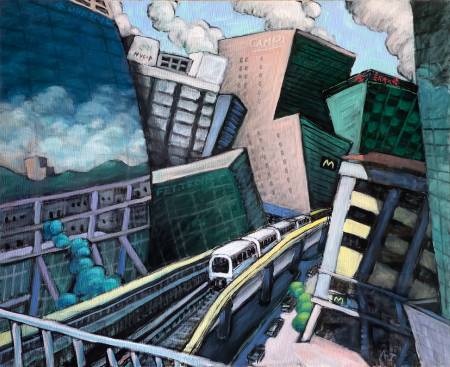-
曾聽說東京的根津美術館有座很美的日式庭園,於是便趁著到東京旅行時專程去「朝聖」。 在這草木扶疏的庭園小徑散步時, 突然看見旁邊有一尊拖著腮還歪著頭的菩薩石像,表情十分慈祥可愛, 同時也看到蓮花法座上放了許多錢幣,想必是訪客祈願留下的,石菩薩後方還有另一條小徑不知通往何處, 當下只感受到一股難以言喻的神祕感, 彷彿這尊菩薩正微笑著邀請來往的眾生, 選擇一條不一樣的路走。 本件作品的中景和背景皆採用交錯筆法表現出茂密樹影搖曳的動態感,與之對比的則是前景的石雕菩薩和石燈,上頭長滿青苔的石雕帶給觀賞者清涼沈靜的感受。此外,畫面中的石梯由近而遠地引領著視角,觀看點最後消失在樹林遠方,如同一部引發觀眾無盡遐想的電影結局般,不知這條路將通往何方。
I've once heard that the Nezu Museum in Tokyo has a beautiful Japanese garden, so I made a special "pilgrimage" during my trip to Tokyo. While walking along the path of the grassed garden, I suddenly saw a stone statue of a Bodhisattva holding cheeks with his hand. His expression was very kind and lovely. At the same time, I also saw a lot of coins placed on the lotus throne, they must be left by tourists for wishing. When I moved on, there was another path behind the stone Bodhisattva. I don't know where it leads. At the moment, I only feel an unspeakable sense of mystery, as if this Bodhisattva is smiling and inviting people to choose a different path.The middle scene and the background both are used staggered brushstrokes to show the dynamic feeling of swaying dense tree shadows. In contrast. The stone sculpture of Bodhisattva and stone lamp in the foreground are covered with moss and give the viewer a cool and calm feeling. In addition, the stone stairs lead the perspective from near to far, and the viewing point finally disappears into the distance of the trees. It is just like the ending of a movie that arouses the audience's endless reverie. I don't know where this road will lead.







